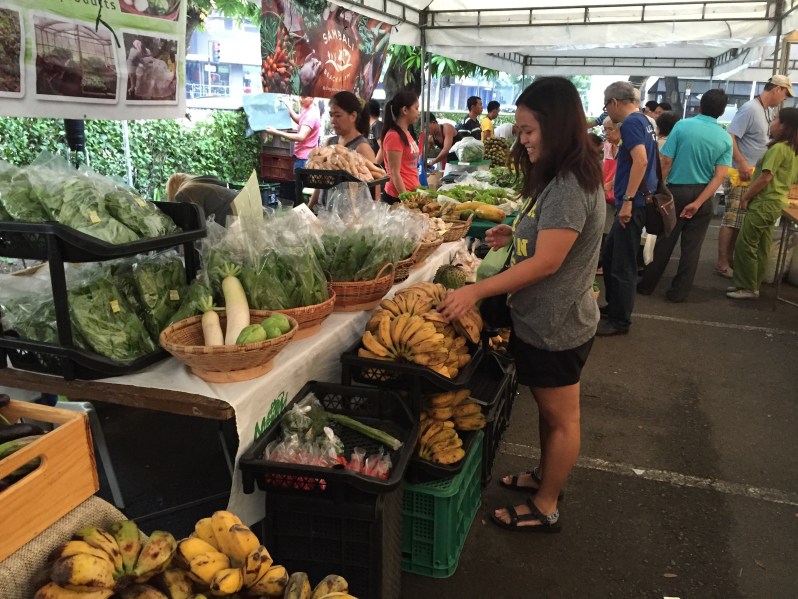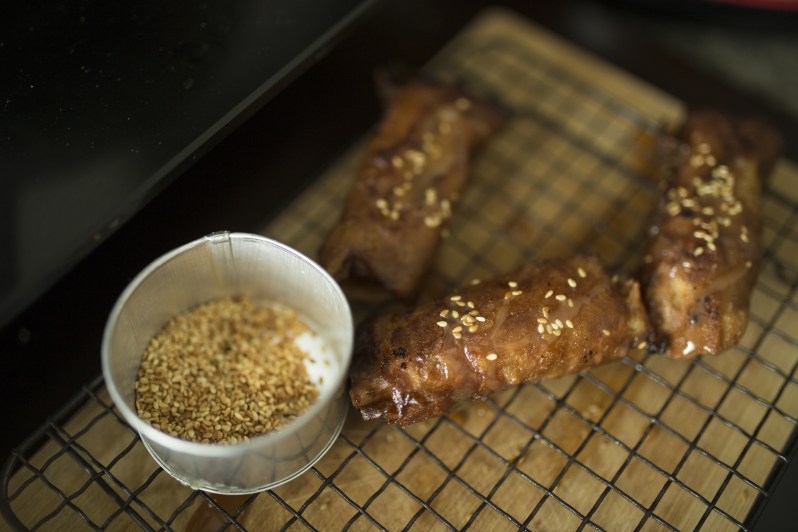This post is posted by TheHipmunk on Hipmunk’s Tailwind Blog on December 30,2015.
The holiday season has just about ended. Thoughts have turned to resolutions, warm winter soup, nights huddled by the fire and snow dusting the ground. But over in Southeast Asia, in the tropical climate of the Philippines, the rainy season still hugs the fields. Vibrant bouquets grace the market booths and exotic fruits are ready for harvest. And if you take a closer look, there is one in particular that pervades the scene…
Yellow. The banana is a strong motif in traditional Filipino cuisine. Called saging, or saba, it is used in all sorts of different concoctions. Culinary tradition of the Philippines is a blend of many cultures –you can find Malay, Spanish, Chinese, American, other Asian and Latin influence and history all laced in. Their use of banana both diverse and unique.
In the world of street food, the banana is very popular as a late-afternoon, sweet snack. Served on a stick, it can be coated in caramelized brown sugar; it can be dipped into a flour-egg mixture, deep-fried and then dipped in sugar; or it can be grilled on charcoal and then brushed with margarine and sugar. It can be rolled into a spring roll wrapper with a bit of jackfruit, topped with sugar and fried – a pastry known as turon, or banana lumpia. There’s banana-flavored iskrambol, a shaved ice with brown sugar and condensed milk, and banana-flavored “dirty ice cream” (also called sorbetes), nicknamed so for the worn, soiled but colorful carts the homemade treat is sold from.
The banana plays a role on the savory side of things too. Ubad, the white core of the banana stalk, is used in soups called kadios. For sweet against sour, the meat for a vinegar-based stew called paksiw is sometimes marinated in a sauce of sugar, water, and banana blossoms. The same flavor contrast is found in the puchero, of Spanish origins, that is beef with banana slices simmered in a tomato sauce. Banana leaves are traditionally used for serving food (salo-salo style), and for wrapping food (binalot) because of the added flavor that they impart. Suman, puto, bibingka – all are specialty Philippine rice-cakes wrapped in banana-leaf liners. The dark red banana flower (puso sa saging) is edible and served boiled and seasoned as a side dish. And then there’s banana ketchup – a surprisingly integral condiment on the Philippine table! Local modifications of spaghetti dishes even like to replace tomato sauce with banana ketchup. Top with sugar and hot dog slices in true Philippine spirit.
Excited by this culinary feature and so many more, Traveling Spoon launched their program in the Philippines in November! You can join their hostess Isi on her morning market visits in Manila to experience the sights and smells and deep-fried bananas, or conclude a meal at Nayna’s with a homemade turon, served with salted caramel. If you find ever find yourself with a ticket in hand for a week or two of Filipino explorations, be sure to book a visit with one of their lovely locals. They would be thrilled to share the real flavor of their cuisine and culture with you.



